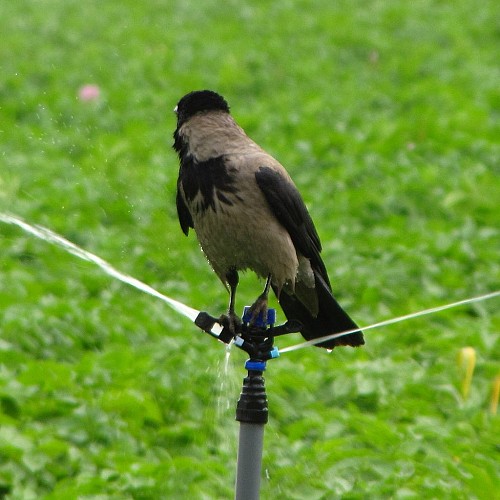Winterize Your Sprinkler System
 Fall is the time to get moving and get your house and its equipment winter-ready. If you live in any part of the United States that experiences freezing winters, preparing your lawn sprinkler system for the cold is an important part of your fall home maintenance routine. Here's why it’s essential to winterize your sprinkler system before the first frost is expected in your area.
Fall is the time to get moving and get your house and its equipment winter-ready. If you live in any part of the United States that experiences freezing winters, preparing your lawn sprinkler system for the cold is an important part of your fall home maintenance routine. Here's why it’s essential to winterize your sprinkler system before the first frost is expected in your area.
Why Winterize Your Sprinkler System?
After every watering, small amounts of liquid remain in your sprinkler system, even when it sits unused for a long period. If this water is left undrained through the cold weather, it will freeze and expand, damaging the system’s piping and other components.
Winterizing a lawn sprinkler system consists of draining out the water in one of three ways, depending on the type of system you have: manually, automatically, or with the help of an air compressor. Winterize your sprinkler system at the right time and save money and hassle, because you won’t have to repair the setup when spring rolls around again.
How To Winterize a Sprinkler System: Manual or Auto Drain Valve
If your system has manual or auto drain valves, you will see them at the irrigation piping’s low points and ends. To prep for winter, first close down the main water supply to your system.
For a manual drain system, open all the manual drain valves and allow the water to flow out of the main line. Be sure to drain all liquid from the sprinkler heads, piping, and backflow device. Then close the manual drain valves.
For an auto drain system, relieve the system pressure, which will activate the auto drain once the pressure has gone down below 10 PSI. open the backflow device’s test cocks. As with the manual drain system, take care to drain any liquid remaining in the sprinkler heads, piping, or backflow device.
How To Winterize a Sprinkler System: Air Compressor (“Blow-out”) Method
Start by turning off the system’s water supply. To winterize your sprinkler system safely, you must also remove the remaining water from all components. This is done using an air compressor. A low-pressure flow of air is pushed through the system’s lines to drain the valves, heads, laterals, and mains.
While air compressors can be rented, DIY sprinkler system blow-out is not recommended because the task can be very dangerous if not performed precisely. Here are the main caveats:
- The compressor should provide the correct amount of pressure and the correct CFM. Otherwise, you face two potential dangers: 1) not draining all the water from your system and thus putting your system at risk of freezing or 2) causing damage to the pipes and/or valves.
- Working with compressed air often results in airborne debris. Protective eyewear approved by the ANSI is a must when blowing out a sprinkler system. Also, avoid standing over the sprinkler system while it is being blown out.
- The compressed air must be shut off promptly as soon as the system is dry. If this is not done, the air movement may create friction on the dry piping, leading to heat damage.
Sprinkler System Winterization Tips
- Gradually taper off the amount of water you give the lawn, starting a few weeks before you plan to winterize your sprinkler system. You'll have healthier grass and soil next growing season.
- Take this opportunity to repair any damaged sprinkler components, so the system will be in great shape for spring.
- Whichever winterization method you use, once you’ve drained the water, protect the main water shutoff valve with foam insulating tape topped with a plastic bag.
- Don’t want to worry about scheduling sprinkler winterization? You can arrange a sprinkler maintenance contract with a reliable local landscaper.
Laura Firszt writes for networx.com.
Looking for a Pro? Call us (866) 441-6648

Average Costs
Related Experiences

Fast Professional Tree Service For My Crabapple And Persimmon

A Simple HVAC Repair Stopped Our Air Conditioner Blowing Hot Air



